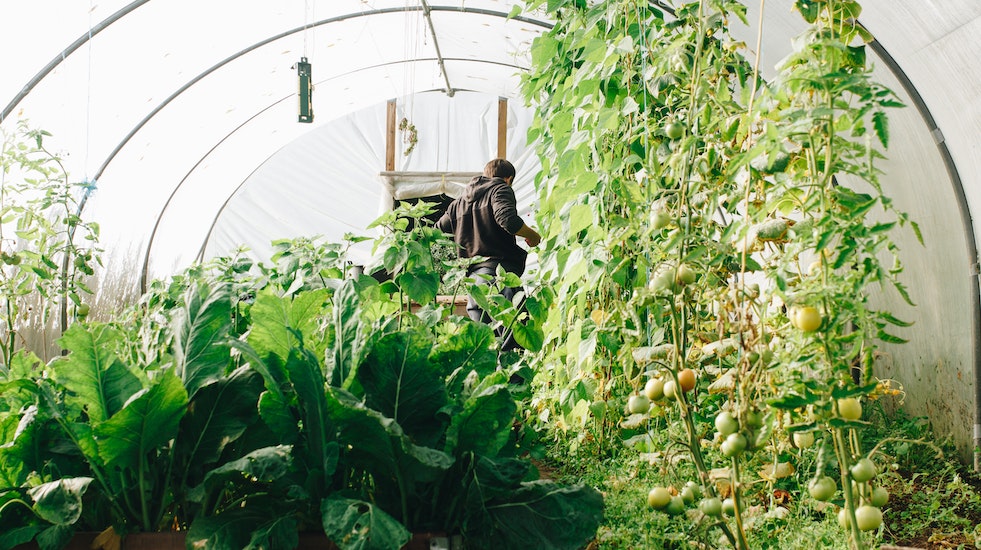Being able to grow vegetables and fruits all year round in the UK or other colder parts of the world would be wonderful, but some climates aren’t ideal for growing. Fortunately, a well-built greenhouse can provide you with the means to grow whatever plant you want even during the harshest of winters.
This article shares how to build a greenhouse that can survive the coldest climate as well as some tips to further winter-proof your greenhouse.
- Choose The Right Type
Several types of greenhouses are available, and some structures are more appropriate for colder climates. Here are your options:
Gable-Style Greenhouses
This is a traditional greenhouse construction featuring straight walls and sloping roofs, creating a triangular gable on either end of the structure. This is the most common design, providing plenty of sunlight access and room to move inside.
Victorian Greenhouses
Traditional Victorian greenhouses are a feat of engineering, with a structural design that traps heat as much as possible. It typically features a high peaked roof for more headroom, allowing you to keep a constant temperature by retaining the hottest air in the roof even if you open windows and vents.
In addition, Victorian greenhouses are known to use large glazing, allowing the warmth of the sun to easily penetrate into the greenhouse. In fact, they are known to help you grow more exotic species such as orchids or summer crops like tomatoes.
South West Greenhouses offers Victorian greenhouses that are less expensive, whilst still using the large glazing panels of the traditional greenhouse style.

Clearview 5′-7″ x 6′-4″ Lancashire Greenhouse from swgreenhouses.co.uk
Lean-To Greenhouse
If you have limited space for your greenhouse, the lean-to style is a perfect choice. It allows you to create a feature wall or enhance a walled garden if you have limited garden space.
In addition to being suitable for small spaces, a lean-to greenhouse ensures warmth. Since it is built against the wall of your home, it benefits from the warmth inside your home. Even if it’s built against a garden wall with no residual heat, this structural style can still efficiently retain heat.
- Opt for Wooden Frames
In cold climate areas, greenhouses are often constructed with wooden frames. Wood is a good insulator and helps preserve the heat inside as much as possible, keeping your plants and small trees warm in the winter. Wood frames are also sturdy and can withstand snow loads and wind. When you choose wooden frames, make sure they are properly treated to prevent warping or rotting over time.
- Insulate, Insulate, Insulate
Every greenhouse needs good ventilation. However, any unintended openings, cracks, or loose seals allow valuable heat to escape, especially during winter. Thus, you want to make sure all walls of your greenhouse are properly insulated.
You can also add a layer of insulation to the inner walls of your greenhouse by lining them with bubble wrap. Bubble wraps are excellent insulators, keeping drafts away and effectively trapping heat. You can find specialized bubble wraps for greenhouse insulation at most gardening stores; nevertheless, regular bubble wraps should work fine.
- Consider Location
By design, greenhouses collect and trap sunlight for maximum heat. And while it’ll likely receive less sunlight in colder regions or during winter, planning the location for installation ensures that your greenhouse has access to plenty of sunlight.
So take note of where you’ll install your greenhouse and ensure nothing blocks the sun from reaching it. Fortunately, most portable greenhouses can be relocated to a more suitable location.
- Install A Heating System
One of the best ways to ensure that your greenhouse maintains a consistent internal environment, even when it’s cold outside is to install a heating system. There are different types of heating systems you can use in your greenhouse. Some may have greater operating costs; others have straightforward installation.
For instance, if you want no-fuss heating, you can install an electric fan heater in your greenhouse. You can also use a boiler that heats water using gas and runs it through underground pipes around the greenhouse. It may be difficult to install but it should help lower your operating costs in the long run.
Takeaway
In areas with cold winters, building a winter-resistant greenhouse and keeping it warm all throughout winter is a challenge. With the onslaught of cold days and cold nights, your plants may follow their natural cycles and wither away if you don’t fully plan and prepare your greenhouse. Don’t worry too much though. By following the above tips, you can build a winter-proof greenhouse that can keep your plants healthy and thriving until spring comes.
